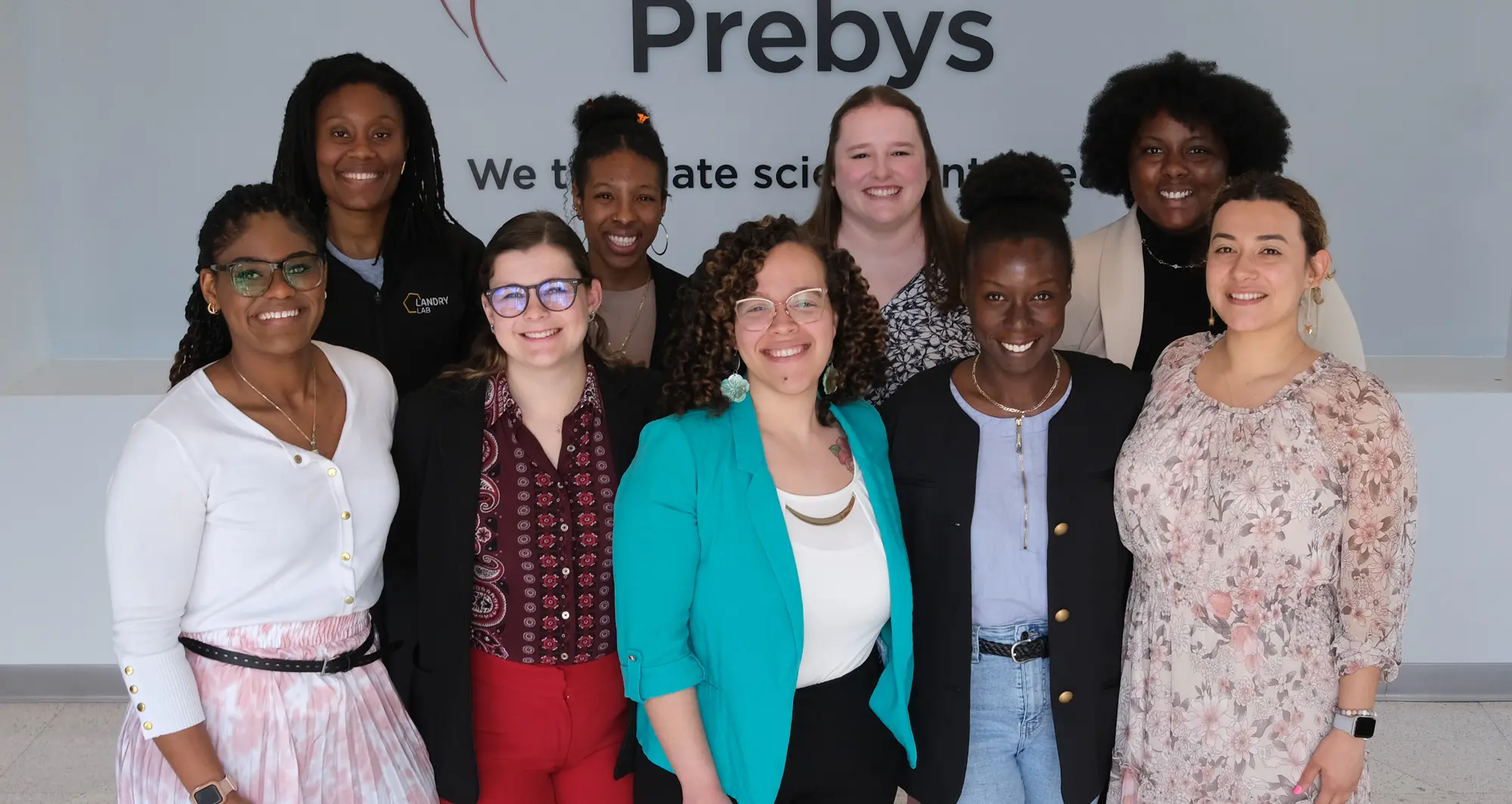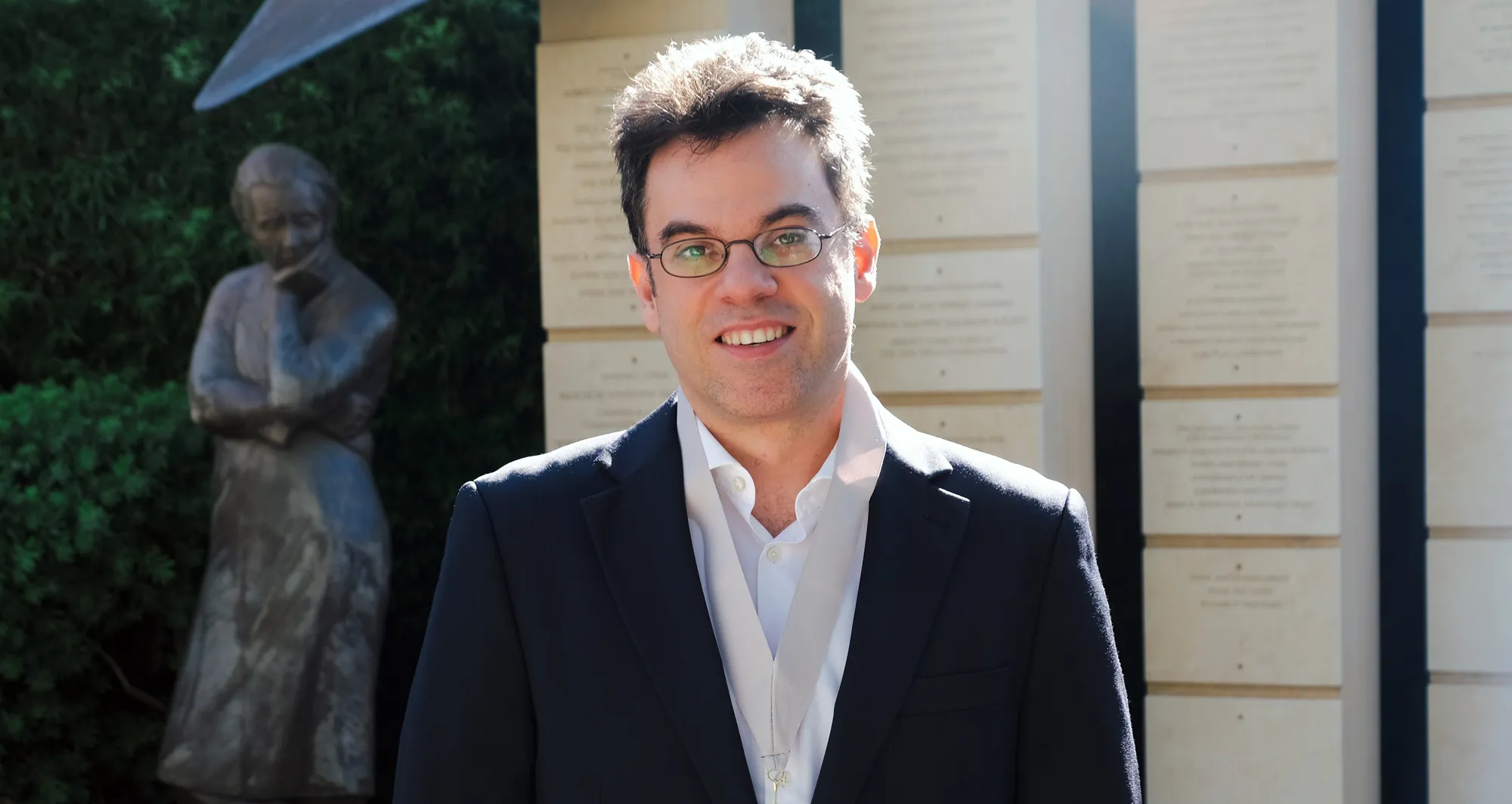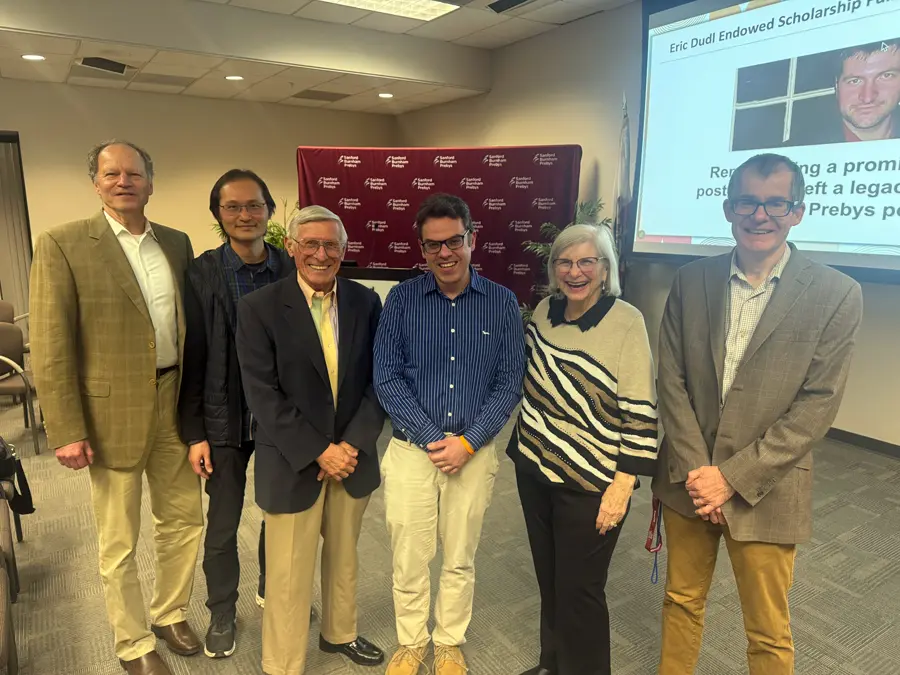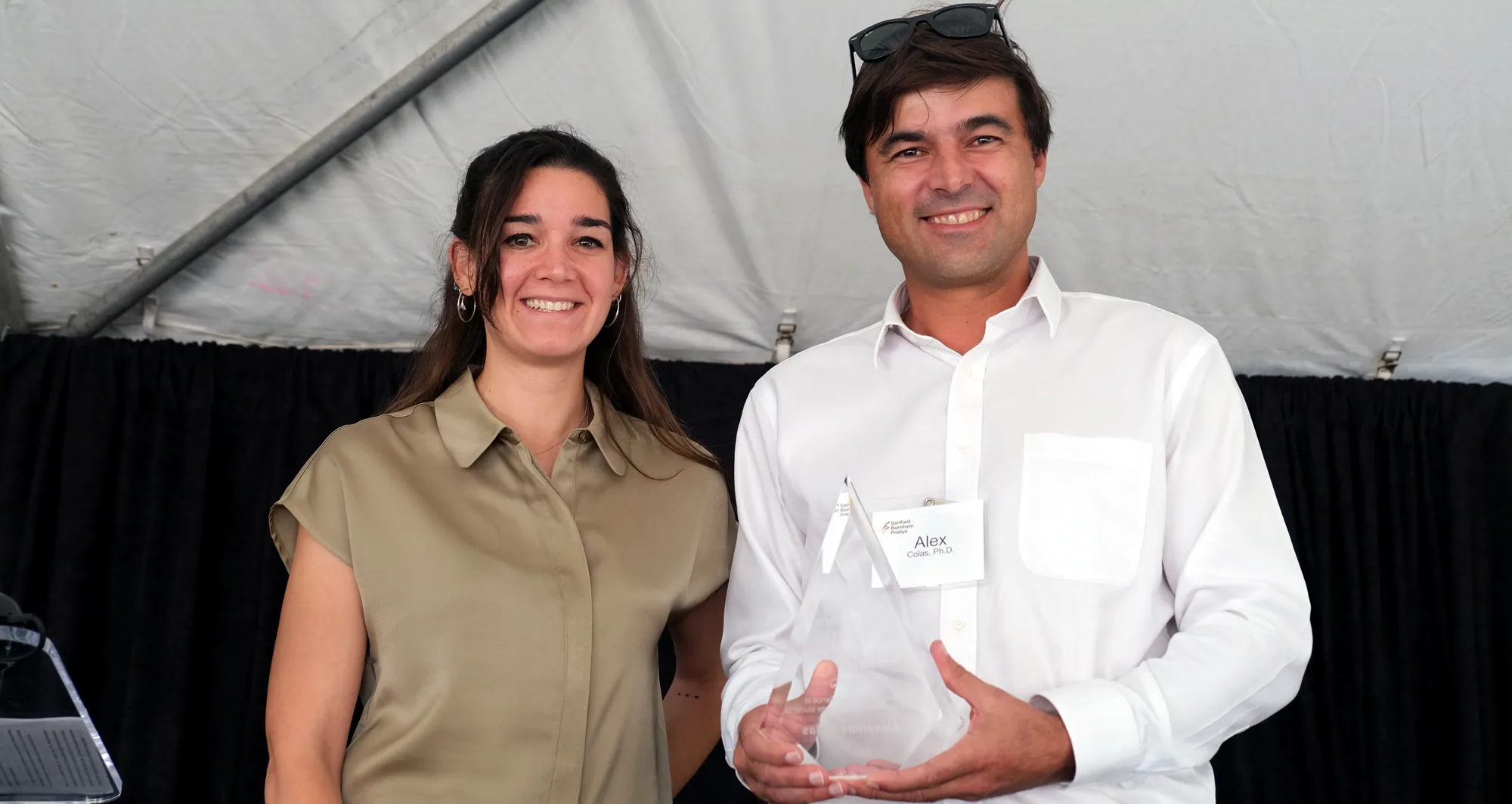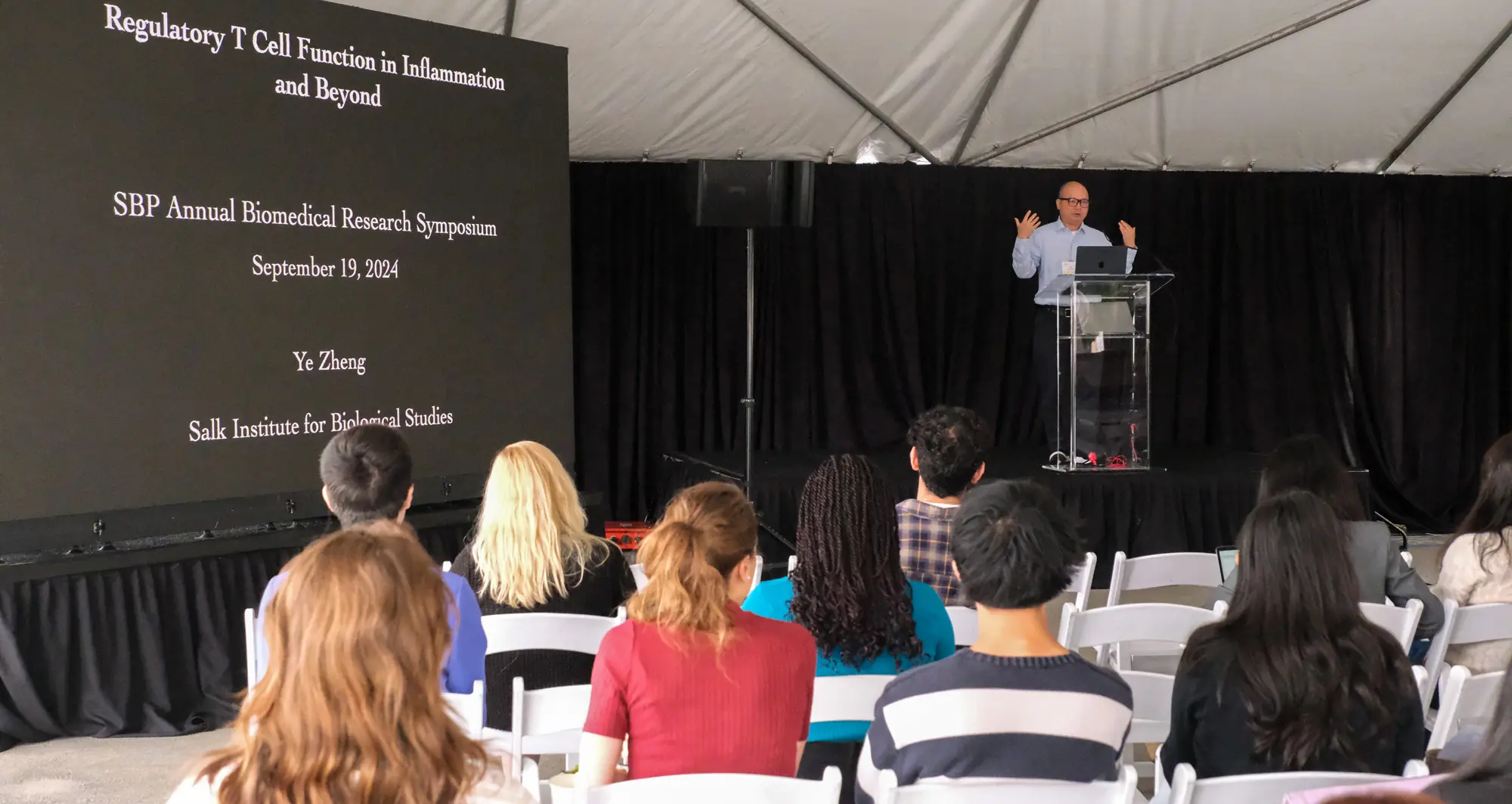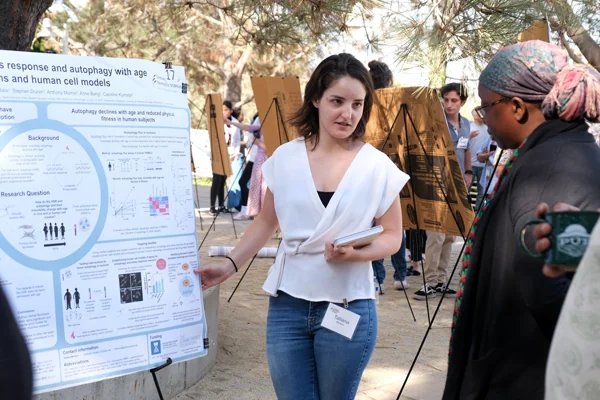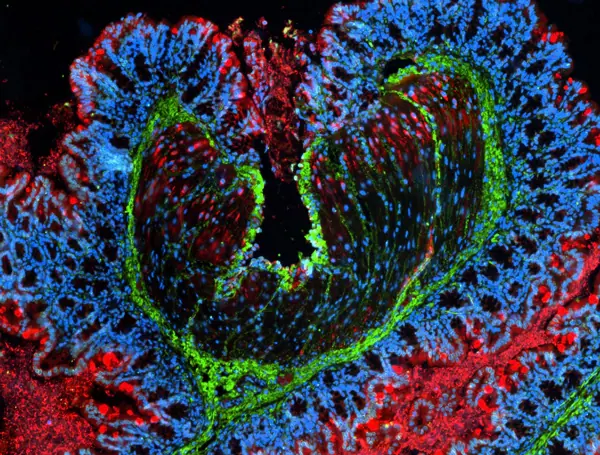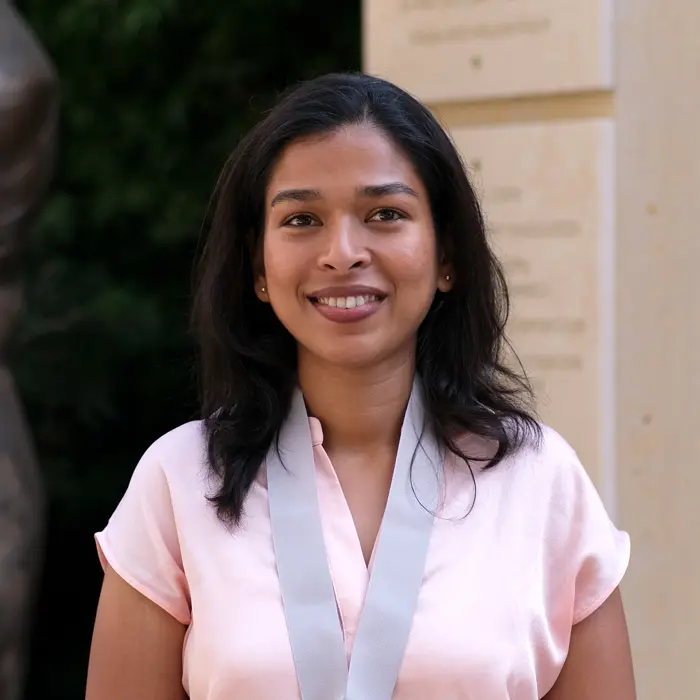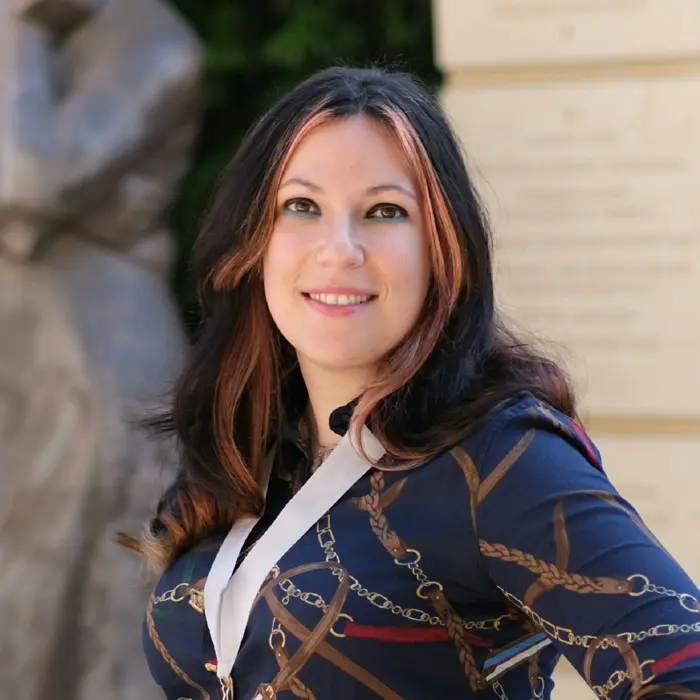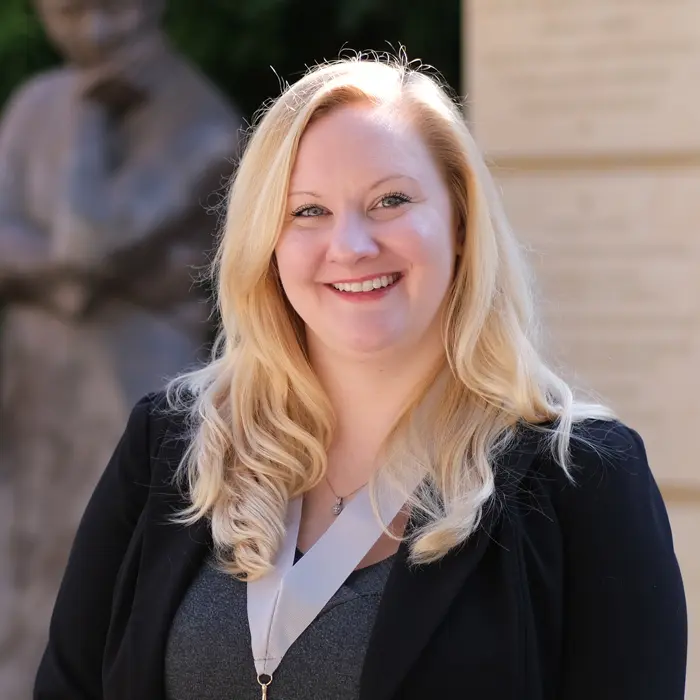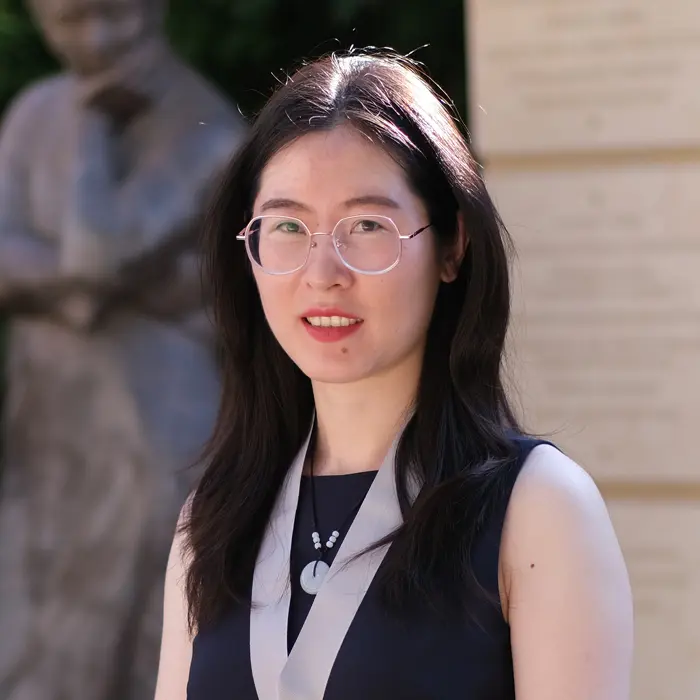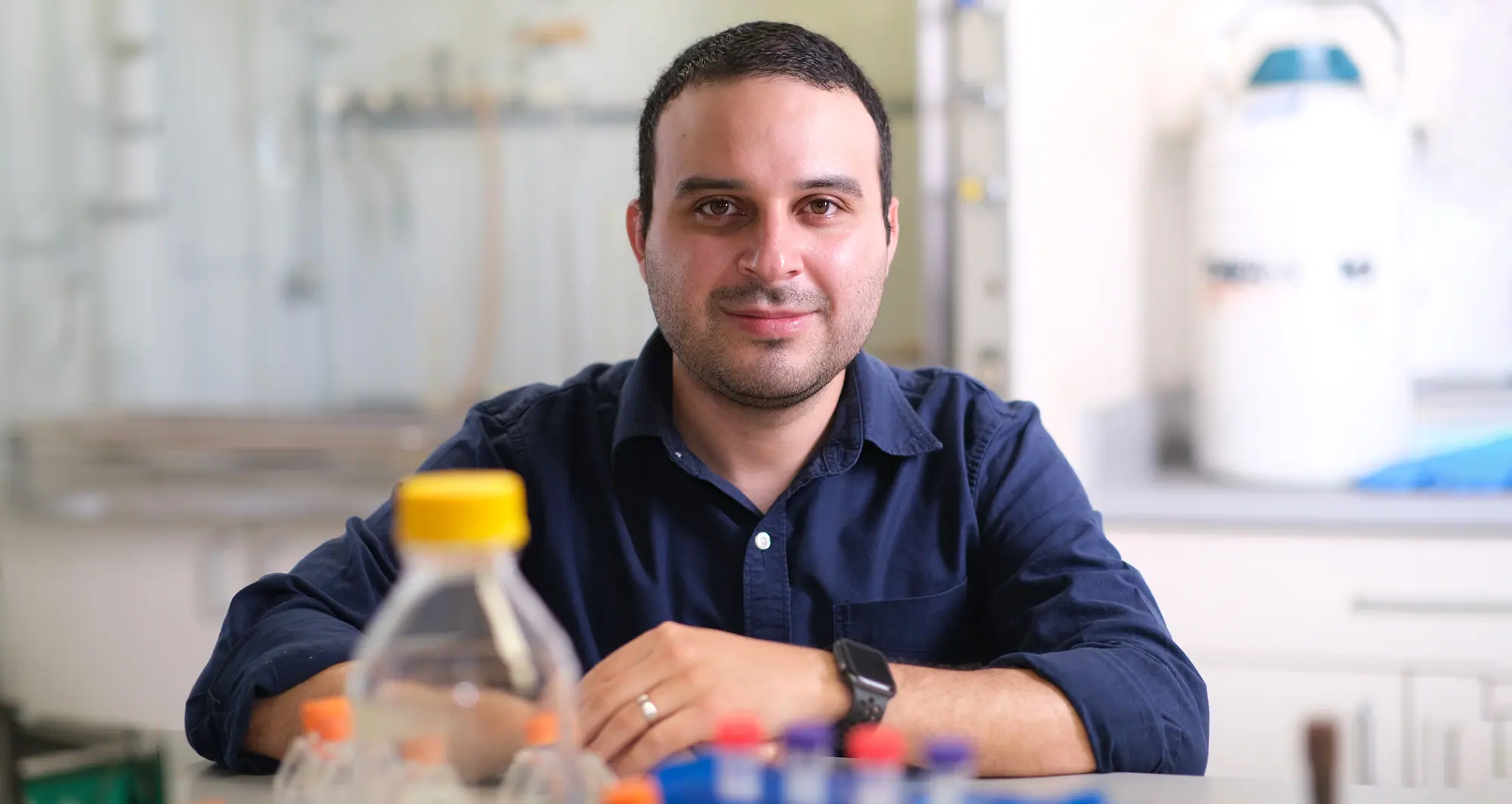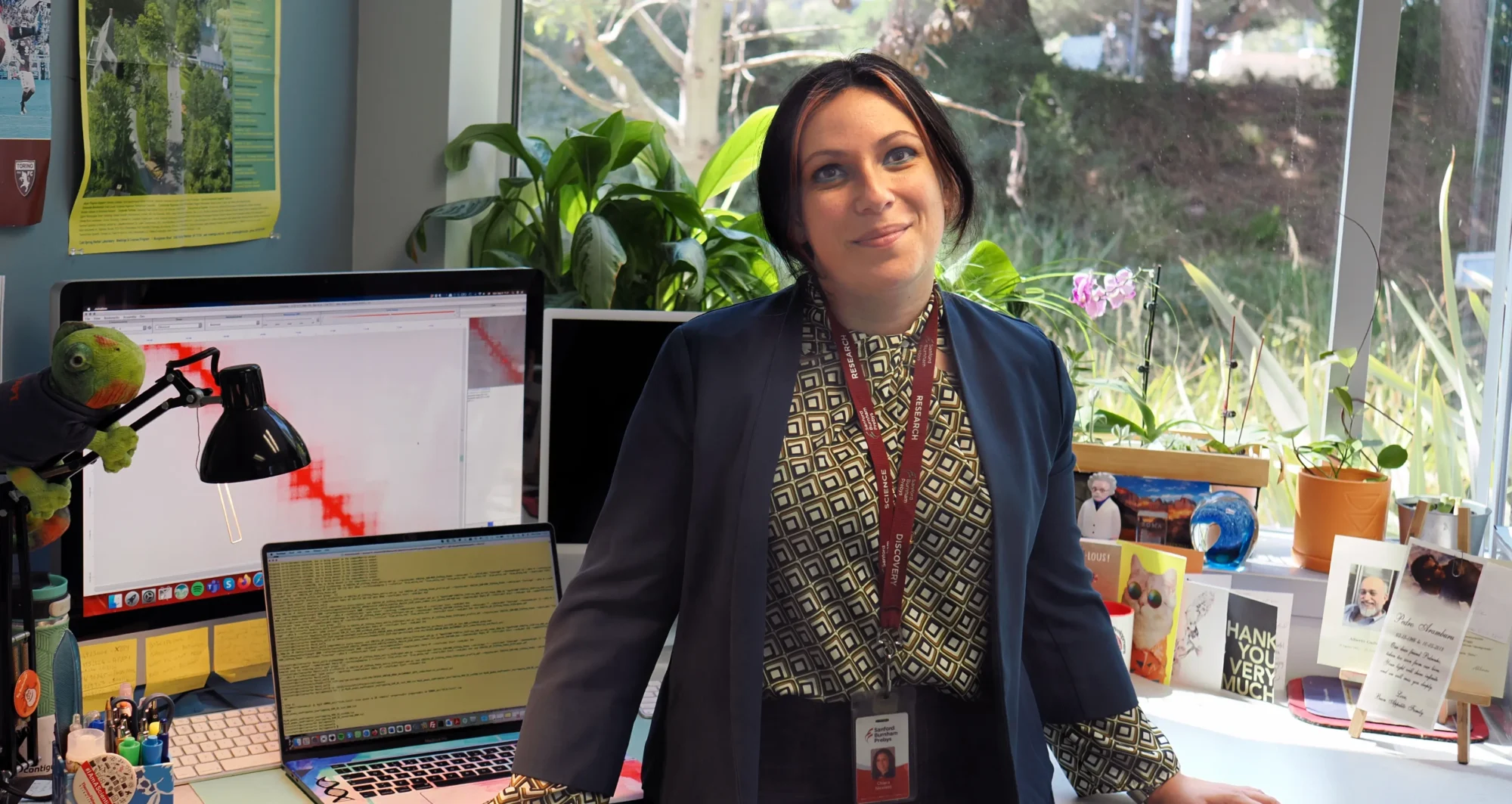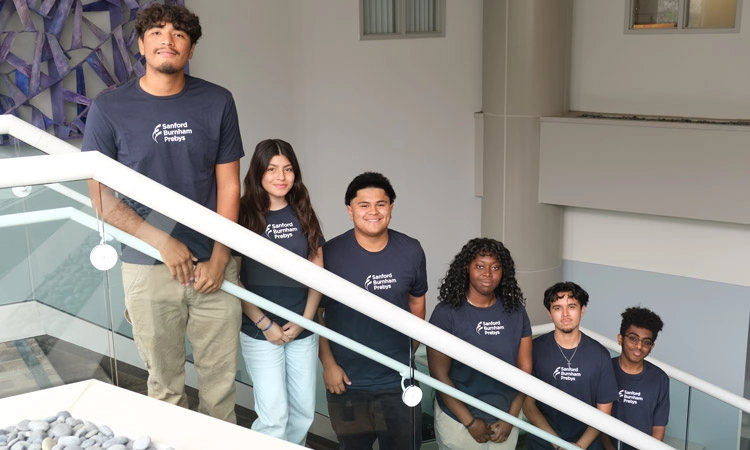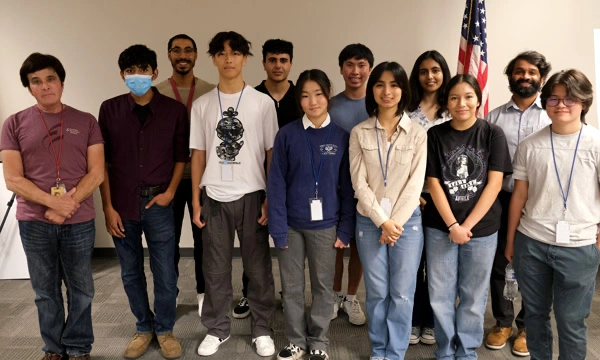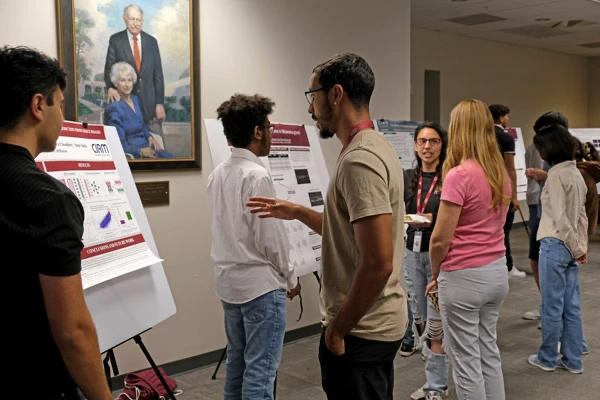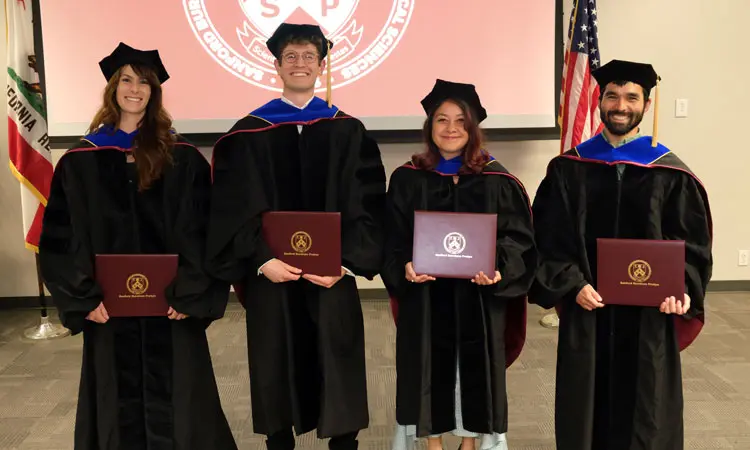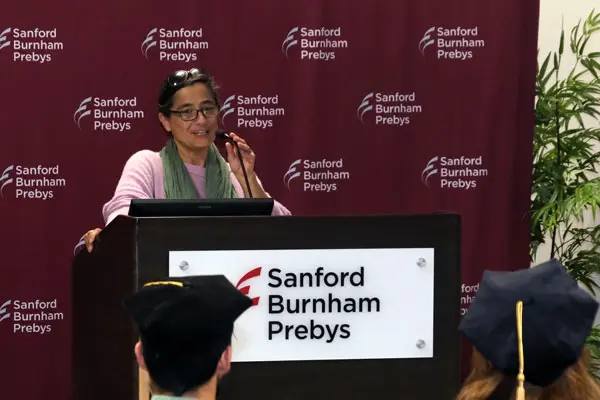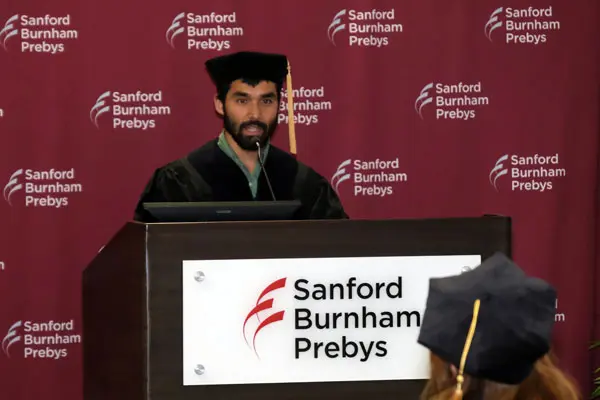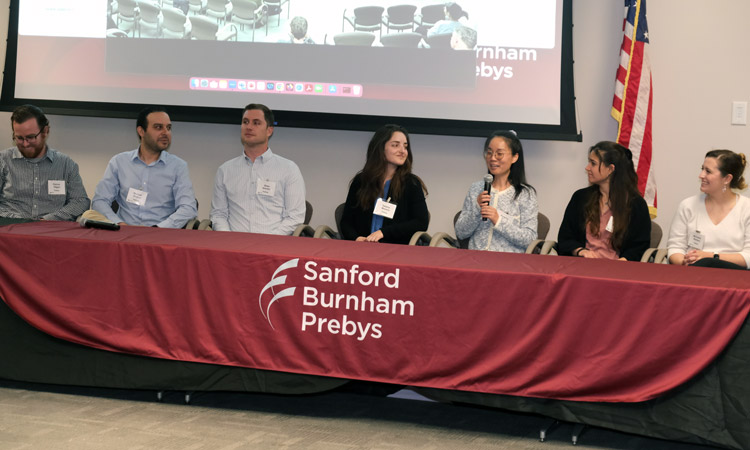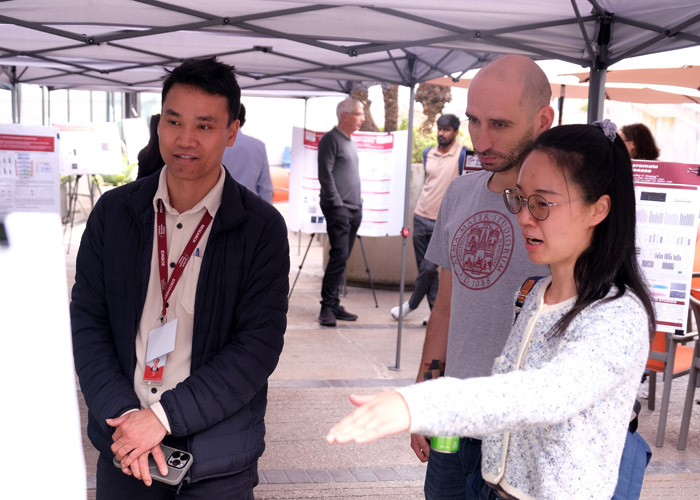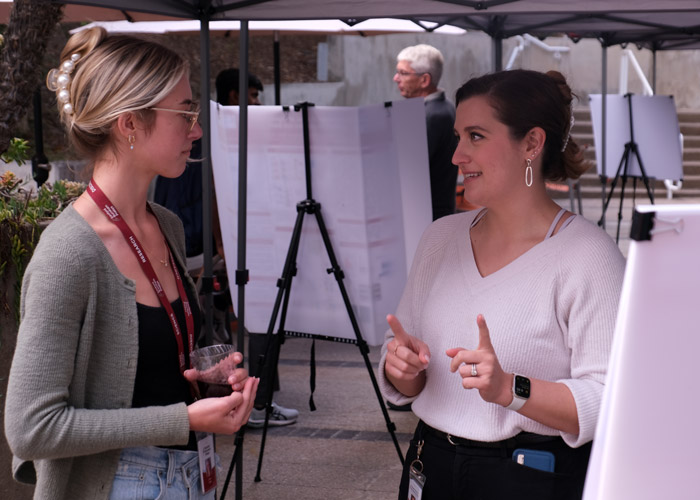The annual Rising Stars Symposium featured nine doctoral-degree candidates representing the next generation of scientists
Nine doctoral-degree candidates from across the U.S. visited Sanford Burnham Prebys for the fourth annual Rising Stars Symposium, a research meeting and networking opportunity for future postdoctoral researchers.
James Marchant, PhD, a postdoctoral fellow in the lab of Alexandre Colas, PhD, at Sanford Burnham Prebys, opened the meeting by introducing the symposium’s keynote speaker, Mark Mercola, PhD, a professor of Medicine at the Stanford University School of Medicine and a professor in the Stanford Cardiovascular Institute.
“We’re so pleased to have a keynote address from a stem cell biology expert responsible for identifying many of the factors that guide the formation of the heart,” said Marchant. “This also is a homecoming for Mark, who was previously on the faculty here and continues to be an extended family member through collaborations and service on dissertation committees.”
Mercola held a joint appointment as a professor at Sanford Burnham Prebys and the University of California San Diego from 2003-15 before joining Stanford. He began his lecture with a discussion of how his research evolved throughout his career, including the opportunities provided by the discovery of induced pluripotent stem cells. Mercola now focuses on developing treatments for heart failure that target mechanisms rather than symptoms.
“While drugs for heart failure have improved over time, they continue to generally improve heart function by altering conditions such as blood pressure and heart rate rather than target the underlying causes,” said Mercola. “I envision a day when treatment begins to resemble modern cancer therapies that are targeted based on understanding characteristics of tumors.”
Mercola also offered career advice to the Risings Stars. He emphasized the importance of pursuing a long-term vision that can guide how you seek training, apply for funding and build your network. Mercola suggested that this vision needs to be balanced with measurable short-term goals that can show your intermediate progress along the way. He also implored early career scientists not to stay isolated in their own labs.
“Be collaborative, and you’ll find that the work is always more enjoyable and successful when you are part of a team,” said Mercola.
Following the keynote address, four Rising Stars discussed their research projects:
- Paola E. Peña García, a PhD candidate in the Poynter lab at the University of Vermont
- Jaquesta Adams, a PhD candidate in the Landry lab at the University of California Berkeley
- Michell Carroll, a PhD candidate in the Pattenden lab at the University of North Carolina Eshelman School of Pharmacy
- Janice Reynaga, a PhD candidate in the Blanco lab at the University of Pennsylvania
Lukas Chavez, PhD, an associate professor in the Cancer Genome and Epigenetics Program at Sanford Burnham Prebys, offered concluding remarks at the end of the symposium’s first day.
“With their excellent presentations, our Rising Stars have lived up to their name,” said Chavez. “It is exciting and reassuring to see that the next generation of biomedical research is in capable hands.”
David Brenner, MD, the president and chief executive officer of Sanford Burnham Prebys, began the symposium’s second day by sharing an overview of the institute and San Diego’s scientific community.
“There is something special in the intellectual environment here at Sanford Burnham Prebys and our neighboring research institutions,” said Brenner. “If you conduct a postdoctoral fellowship here, you will find it to be a very welcoming, collaborative and interactive ecosystem.”
Sanju Sinha, PhD, an assistant professor in the Cancer Metabolism and Microenvironment Program at Sanford Burnham Prebys, added his reflections on the importance of scientific meetings for early career researchers.
“I place great value on these kinds of symposia,” said Sinha. “I met many of my collaborators at a similar symposium in New York, so I encourage the Rising Stars to take advantage of this opportunity to get to know each other and investigators throughout the institute.”
After the opening remarks, five Rising Stars presented about their research:
- Lanette LaComb, a PhD candidate in the Almo lab at the Albert Einstein College of Medicine
- Danielle Johnson, a PhD candidate in the Jewett lab at the University of Arizona
- Tracey Porter, a PhD candidate in the Wingert lab at the University of University of Notre Dame
- Sarah Brashear, a PhD candidate in the Smith lab at the University of California Davis
- Ariell Smith, a PhD candidate in the Eguiluz lab at the University of University of California Merced
In addition to the two days of scientific talks, the Rising Stars toured the Conrad Prebys Center for Chemical Genomics, learned about the institute’s core facilities and shared research resources, networked with institute scientists, and gained a better understanding of postdoctoral opportunities at Sanford Burnham Prebys.
The 2025 Rising Star Symposium was sponsored by the NCI-designated Cancer Center and was planned collaboratively by the institute’s Workforce Engagement and Belonging Council and planning and selection committees.
The planners expressed their gratitude to everyone who contributed to this institute-wide effort, including session moderators and facilitators, Cancer Center administration, the Research Administrative Services team, the Communications team and many volunteers.
